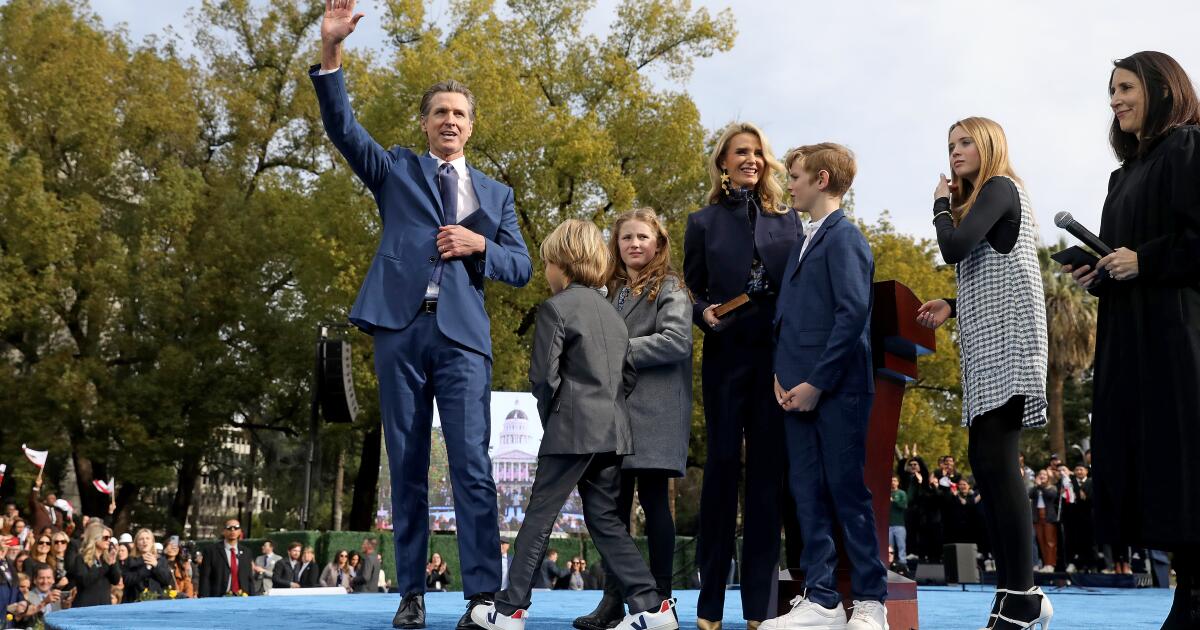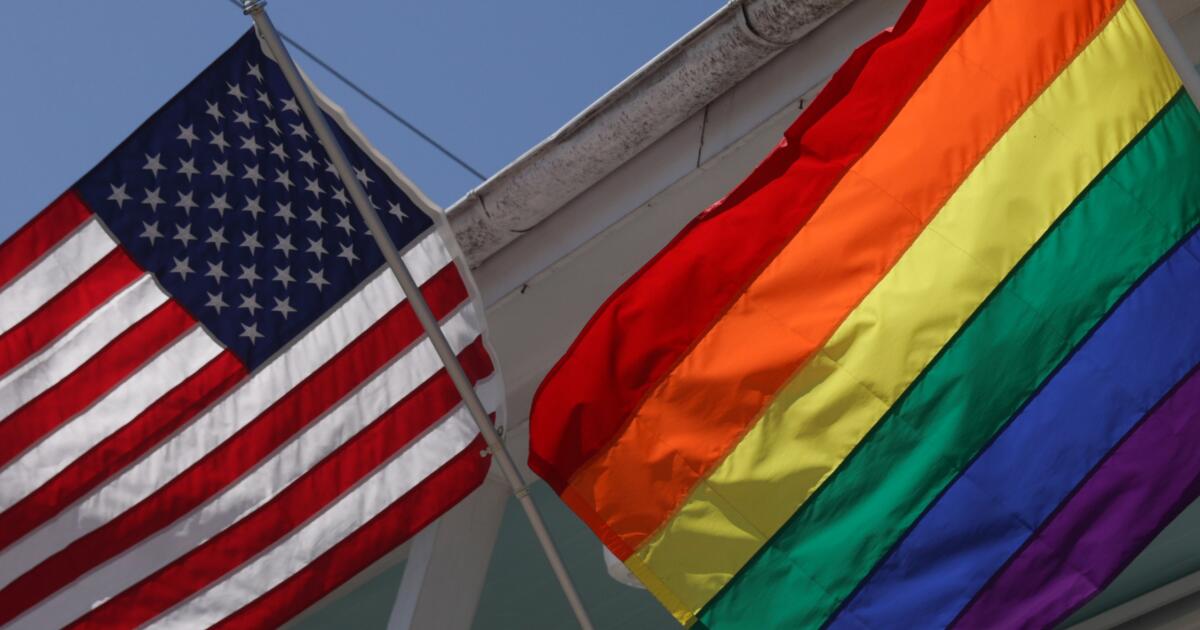World News
Environmentalists push to add burrowing owl to endangered list
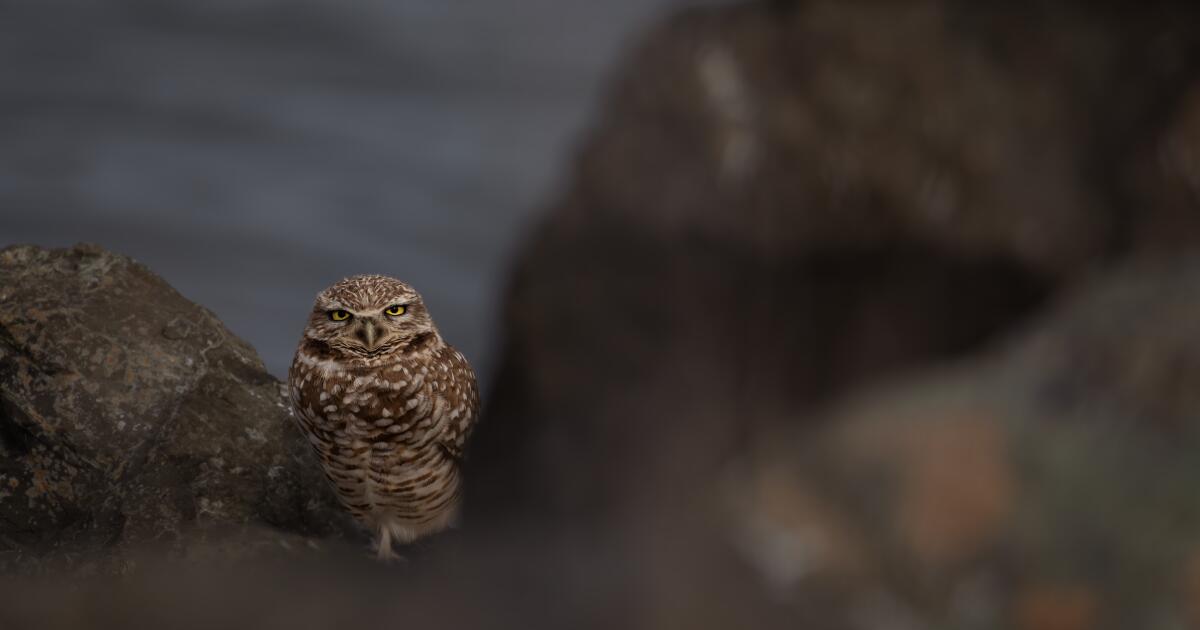
It’s kind of hard not to be smitten with the burrowing owl.
Standing just 9 inches tall and weighing less than a cup of coffee, these owls prefer to live in the ground, where they feed mainly on insects and small rodents, rather than in trees. Their miniature size, feathery floof and comically big eyes give these birds of prey a charisma that captivates the lens of wildlife photographers and the hearts of even the most clinical environmental scientists.
“Once you see a burrowing owl, you just fall in love,” said Catherine Portman, president of the Burrowing Owl Preservation Society.
But their cuteness hasn’t protected this grassland species from a dangerous decline in population. This month, several wildlife conservation groups petitioned the California Fish and Game Commission to list these owls as endangered or threatened under the California Endangered Species Act.
Their report cites a 2007 statewide survey that measured an 11% decline in burrowing owls since 1993; although no comprehensive population count has be done since, they point to regional studies that show troubling numbers. Researchers Robert L. Wilkerson and Rodney B. Siegel counted 6,408 burrowing owl pairs in the Imperial Valley from 2006-07, but according to another study done by Jeffrey Manning, more than 1 in 4 breeding pairs had disappeared.
Shani Kleinhaus, a resident of Santa Clara Valley and environmental advocate with the local Audubon Society, remembers a time when it was easy to spot these raptors bobbing their heads all across the Bay Area, even in their camouflaged plumage.
“In 2009 we still had burrowing owls in the county that were very accessible to the public so people could see them,” Kleinhaus shared. But now, she said, most if not all of these birds rely on local conservation efforts to help protect their dwindling habitat in the Bay Area and help them pair when they reach reproductive maturity.
Why are the owls disappearing?
According to the most recent census, 70% of burrowing owls in the state of California reside in the Imperial Valley and surrounding areas in Southern California. As housing developments push farther and farther out from the state’s urban cores and wind and solar farms expand in rural areas, these owls have found themselves sometimes competing with humans for real estate.
But it’s a little more complicated than rapacious developers versus hapless birds; there’s plenty of blame to spread around.
Burrowing owls rely on ground squirrels to help build their nests, but farmers often kill them as pests because they nibble on electrical wiring and feed on produce. Feral cats and roving hounds have been known to hunt them down. Invasive grasses brought by Spaniards during the late 1700s to feed their livestock have made grasslands less habitable for ground squirrels and burrowing owls alike.
There are mitigation fees that developers pay if they are encroaching on burrowing owl habitats. And the Migratory Bird Treaty Act and the California Fish and Game Commission codes afford protections to burrowing owls, but advocates say it’s not enough.
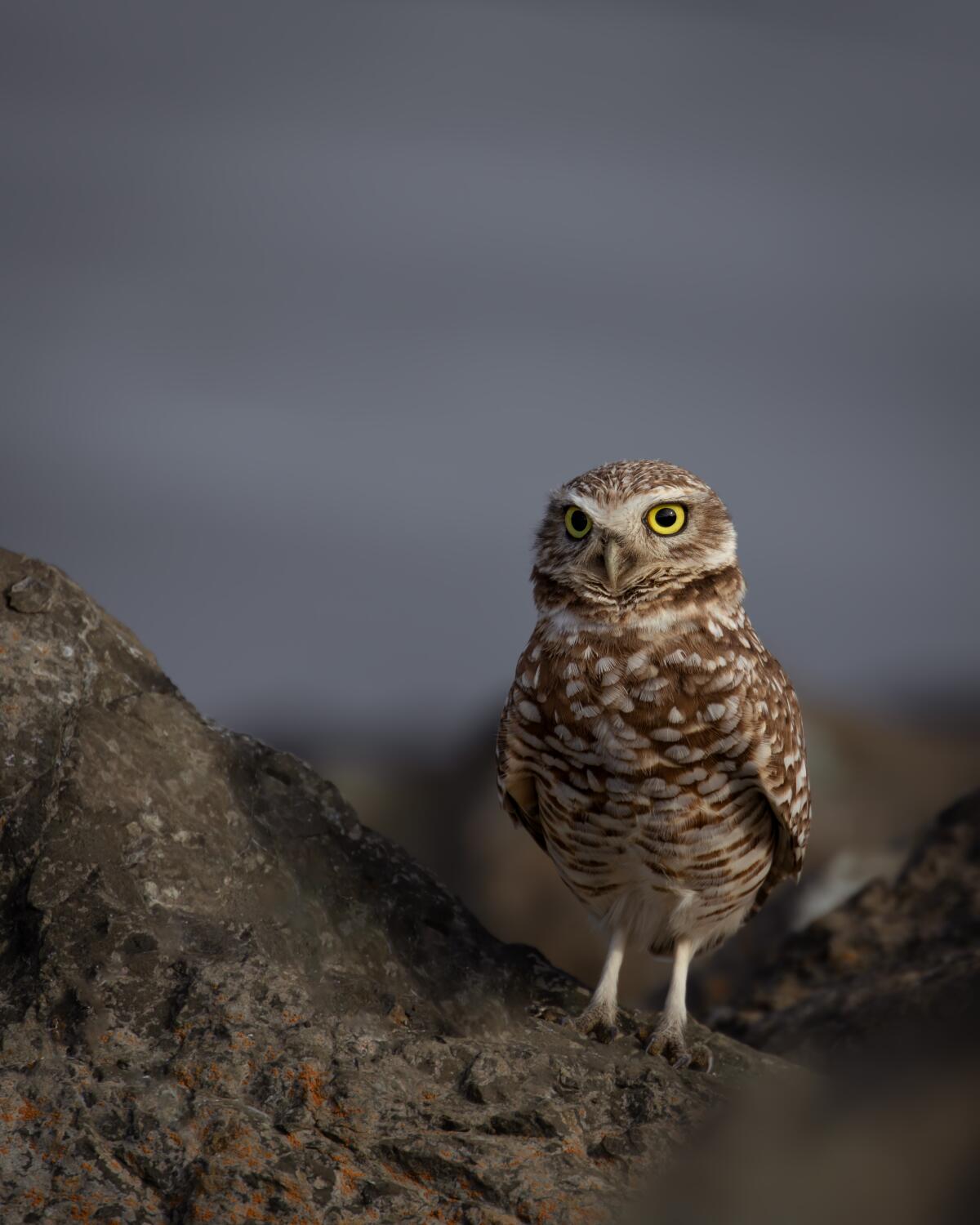
A burrowing owl in a busy park in Contra Costa County keeps watch as dozens of dogs explore just feet away.
(Lauren Bettino)
The decline of the owl is ‘death by a thousand cuts’
These environmentalists have petitioned to protect the burrowing owl before, most recently in 2003 when scientists like Lynne Trulio noticed a worrisome decline in the population of burrowing owls across the state. That petition was rejected because the state noted that the owls were flourishing in the Imperial Valley with the increase in agriculture in the 1990s.
“[Burrowing owls] should have been listed back then, in my opinion,” said Trulio, chair of the environmental studies department at San Jose State University. “What’s different 20 years on is that the trend that we saw in 2003 decline has steepened, and has gotten worse.”
Esther Burkett, senior environmental scientist at California Department of Fish and Wildlife, admits there aren’t enough legal protections for the owls and that the state bureaucracy can make it difficult to act quickly. (Her department is not to be confused with the Fish and Game Commission; her team does the research that informs the policy and rules that the Fish and Game Commission decides.)
“You got to know what you’re looking for. So, ideally, for any species, the actual surveyor needs to be trained on how to do that,” said Burkett. “[If] you miss a review of that [California Environmental Quality Act] document you don’t get another chance at it. And then we’re gonna lose three [breeding] pairs and it’s just death by a thousand cuts over time.”
Burkett manages a wide array of species in the state and said she’s overwhelmed by the need and the lack of resources she has to address the problems facing many of these animals. The last time they put together a comprehensive report on burrowing owls was in 2012, and even that report took four years to put together. She likens the situation to a hospital where they’re trying to address many patients — species tagged as “special interest” like the burrowing owl are in the ICU, but most of their resources are going toward endangered and threatened species in the emergency room.
Activists intervene on the owls’ behalf
Portman spends a lot of her time teaching Californians how to apply the California Environmental Quality Act to protect burrowing owls. The statute, which Gov. Ronald Reagan signed into law in 1970, requires developers to gauge the environmental effects of their projects and plan how to mitigate them — and allows the public to challenge them. But it’s not always easy to make sure these agencies are doing their due diligence.
“I don’t put that on the developer. I put that on the land use jurisdictions,” said Portman. The agency tasked with preparing the environmental impact report usually makes the developer bankroll it, and it’s in the developer’s interests to hurry the project toward completion. “The city councils, the county Board of Supervisors, whoever the lead agency is, gets to decide how that land is used,” Portman said, but they “do not take full advantage of the authority that they had.”
Other scientists are working to increase the chances burrowing owls can survive and successfully reproduce. For example, the San Diego Zoo Wildlife Alliance, which has been collaborating with agencies and municipalities to save the burrowing owl, recently released some owls that had been rescued from near-certain death as chicks.
Jeff Miller, senior conservation advocate at the Center for Biological Diversity, was author of both petitions; he’s one of the few activists who remembers when biologists started sounding the alarm in the 1990s. Miller believes the outcome of this petition could be different because the priorities of the commission have shifted over time.
Back when the Fish and Game Commission began, Miller said, “everything was managed as to be fished or to be hunted.” Today, more board members have expertise in environmental issues, he said, and “there’s a lot more emphasis on conserving imperiled species.” The commissioners did not respond to The Times’ request for comment.

A burrowing owl in a busy park in Contra Costa County dozes off while devoutly standing guard outside his burrow.
(Lauren Bettino)
Burrowing owls and California’s grasslands
Burrowing owl advocates said the goal of listing the bird as an endangered species is to eventually get it off the list. But Trulio thinks listing the bird under California’s Endangered Species Act could be the key to preserving the state’s grasslands.
Trulio’s speciality is urban species, and she’s contributed to the research that underpins Santa Clara County’s habitat conservation plan on burrowing owls. But before that she was also the lead scientist for the South Bay Salt Pond Restoration Project, one of the largest tidal wetland restoration projects on the West Coast.
“One of the things that drove the effort was the fact that there were endangered species” in wetlands, said Trulio. She said it took years to change the perception of the wetlands as a dumping ground and to get a ballot measure to fund its preservation.
Where developers might look at grasslands as vast empty landscapes to build on, Trulio said, she sees their value to the public as spaces for outdoor recreation and sequestering carbon to fight climate change. It’s not just about protecting this one species of bird, but the ecosystem they inhabit, Trulio said.
“We need to protect burrowing owls before urbanization takes hold,” Trulio stated. “Once urbanization takes hold, what really happens is land values become so high that you can’t protect them.”
The double-edge nature of visibility
Lauren Bettino, a Bay Area wildlife photographer, had never seen a burrowing owl before she set out to Point Isabel Regional Shoreline to snap a photo of these rare birds.
Bettino was taking a break from her search and sat down on a rock only to realize she happened to share a perch with a burrowing owl. “He was not concerned about me at all,” Bettino recalled. “I spent probably an hour and a half to two hours just sitting next to him and watching him.”
Bettino tries not to advertise exact locations of where she photographs wildlife because it could attract over-zealous photographers who could disturb them. But she’s believes sharing pictures of the burrowing owls is an important way to encourage people to care more about their natural neighbors; she knows most people are not field biologists.
The Audubon Society’s Instagram page often features burrowing owls where they are liked by thousands of viewers. To Kleinhaus it makes sense why there’s such an outpouring of love. “Seeing an owl opens your eyes to something very mythical or primordial,” she said. “It elicits emotion not just from me, but anyone who sees them.”
World News
2nd local radio host says they were given questions ahead of Biden interview

A second local radio host on Saturday told ABC News that he was provided a list of questions in advance of his interview with President Joe Biden this week.
“Yes, I was given some questions for Biden,” Earl Ingram of CivicMedia told ABC News. Ingram, a prominent host of a Wisconsin radio station, interviewed Biden this week in the wake of his debate performance.
Ingram said he was given five questions and ended up asking four of them.
“I didn’t get a chance to ask him all the things I wanted to ask,” he said.
Ingram is the second interviewer who now says they were provided questions by Biden aides to ask the president this week. Earlier today, another local radio host who interviewed Biden this week told CNN she was given questions to ask Biden before the interview.
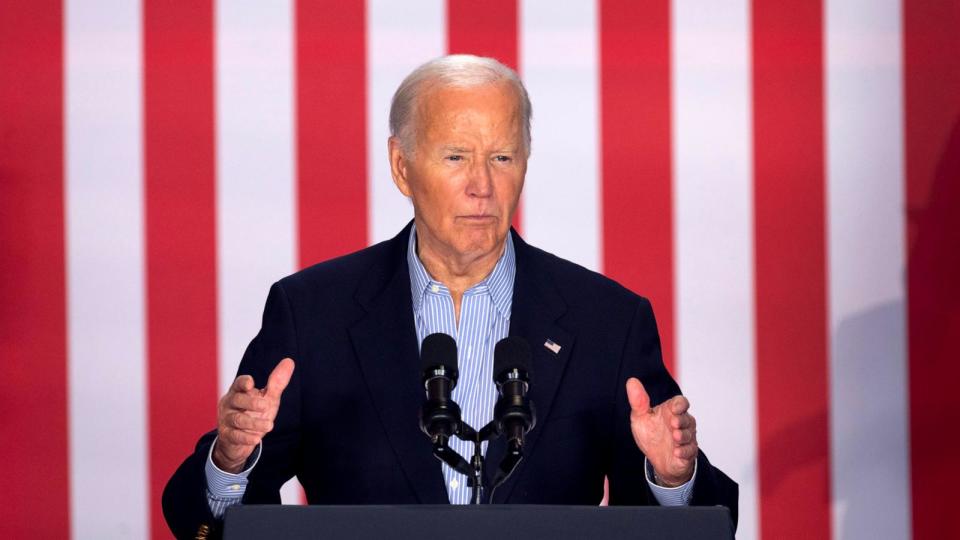

“We do not condition interviews on acceptance of these questions, and hosts are always free to ask the questions they think will best inform their listeners,” the Biden campaign told ABC News on Saturday.
Ingram told ABC he didn’t see anything necessarily wrong with the practice. “To think that I was gonna get an opportunity to ask any question to the President of the United States, I think, is a bit more than anybody should expect,” he said.
He continued that he was grateful for the opportunity to interview Biden at all.
“Certainly the fact that they gave me this opportunity … meant a lot to me,” Ingram said.
MORE: Wealthy Democratic donors sound alarm over Biden staying in race
On CNN earlier today, Andrea Lawful-Sanders, the host of WURD’s “The Source,” said Biden officials provided her with a list of eight questions ahead of their interview with Biden.
“The questions were sent to me for approval; I approved of them,” she said.
“I got several questions — eight of them,” she continued. “And the four that were chosen were the ones that I approved.”
Responding to Lawful-Sanders, Biden campaign spokesperson Lauren Hitt said in a statement that it’s not “uncommon” for interviewees to share topics they would prefer. She noted that Lawful-Sanders was “free” to ask any questions she saw fit. She also noted that it was the campaign who sent over the questions and not the White House as other reports claim.
Lawful-Sanders did note in her interview with CNN that she ultimately “approved” the questions provided.
“It’s not at all an uncommon practice for interviewees to share topics they would prefer. These questions were relevant to news of the day – the president was asked about this debate performance as well as what he’d delivered for black Americans,” the statement said.
“We do not condition interviews on acceptance of these questions, and hosts are always free to ask the questions they think will best inform their listeners. In addition to these interviews, the President also participated in a press gaggle yesterday as well as an interview with ABC. Americans have had several opportunities to see him unscripted since the debate.”
A source familiar with the Biden booking operation told ABC News that moving forward they will “refrain” from offering suggested questions to interviewers.
“While interview hosts have always been free to ask whatever questions they please, moving forward we will refrain from offering suggested questions.”
2nd local radio host says they were given questions ahead of Biden interview originally appeared on abcnews.go.com
World News
President George W. Bush turns 78 years old


George W. Bush, born on July 6, 1946, in New Haven, Connecticut, was the 43rd President of the United States.
Bush was born to parents Barbara Bush and former President George H. W. Bush. He has five siblings; Jeb Bush, Marvin Bush, Neil Bush, Dorothy Bush Koch and Pauline Robinson Bush. Pauline was diagnosed with leukemia and passed away at age three.
He was formerly the Republican Governor of Texas from 1995 to 2000.
WHY FORMER PRESIDENT GEORGE W. BUSH IS WINNING … THE POST-PRESIDENCY
Bush was first elected to the White House in November 2000, and officially began his first term as president in January 2001, after he defeated Democrat Al Gore during the presidential election. Bush was reelected to his second term as the incumbent in November 2004, when he prevailed over Democrat John Kerry, and led the United States until January 2009 before handing over his torch to former President Barack Obama.
Bush married Laura Bush on November 5, 1977, the day after her 31st birthday, in her hometown of Midland, Texas. The couple were engaged in September 1977, and married less than two months later in a Methodist church. Bush and Laura met at a barbecue, and he took her to play mini-golf on their first date.
The Bush’s share twin daughters, Barbara Pierce Bush and Jenna Bush Hager, born on November 25, 1981. Today, the couple also share four grandchildren; Mila, Poppy, Hal and Cora.
GEORGE BUSH, FORMER FIRST LADY ISSUE STATEMENT ON AFGHANISTAN WITH MESSAGE TO US TROOPS, VETERANS
During his presidency, Bush cared for his English springer spaniel, Spot Fetcher, who accompanied him to meetings in the Oval Office and on adventures throughout the White House. The dog was born to his parent’s dog, Millie.
On September 11, 2001, less than one year into Bush’s presidency, the Twin Towers in New York City were attacked by terrorists when airplanes hit both buildings, causing a collapse and thousands of lives lost. At the time, Bush was reading to elementary-aged children at a school in Sarasota, Florida. He was calmly and quietly advised of the attacks and quickly returned to Washington, where he was briefed alongside Vice President Dick Cheney.
Bush was regarded highly for his poise while learning of the attacks and for his demonstration of patriotism and leadership in the uncertain days and weeks following the hijackings of multiple planes on the day that shook America to her core.
SADDAM CAPTURED ‘LIKE A RAT’ IN RAID
On December 30, 2003, during Bush’s first term as POTUS, Saddam Hussein, the Iraqi leader and executor of the 9/11 attacks on the U.S., was captured by the American military.
In the early morning of December 30, 2006, during Bush’s presidency, Hussein was hanged and executed for his crimes against humanity. Americans across the nation celebrated the death of Hussein and applauded Bush for promising the country he would take him out and following through.
While Bush was regarded for his dealings with the terrorist attacks, the signing of No Child Left Behind Act and the Patriot Act and the creation of the United States Department of Homeland Security, many Americans were unhappy with the sanctions of interrogation techniques, the war in Iraq and taxes while he was president.
CLICK HERE TO GET THE FOX NEWS APP
World News
These Obscure Democrats Could Soon Become Kingmakers

They are lawyers and school board members, labor activists and faith leaders, lifelong Democrats and party newcomers. Some of them just turned 18, others are pushing 80.
These are the people who make up the 3,939 delegates to the Democratic National Convention. Some are elected, and some are selected — each state party has its own rules — for what is normally a ceremonial task: nominating their candidate for president.
But in the — still unlikely — scenario in which President Biden steps down as the nominee, they will suddenly be charged with picking a new nominee.
Most of these delegates did not set out to become kingmakers in the Democratic Party, but rather to be part of a pro-Biden slate pledging support to the president. But in the event Mr. Biden drops out, they would be vaulted from the obscurity of extras at a quadrennial television extravaganza into a group with the fate of the party — and, in the view of many Democrats, the future of the country — on their shoulders.
Many are loath to even consider that as an option, remaining steadfastly loyal to the president as he affirms his commitment to remaining in the race. And some find themselves overwhelmed by the possibility.
Phil Swanhorst, the chair of the Eau Claire County Democrats in Wisconsin and a first-time delegate, said that “with all the turmoil going on,” he did not want to discuss what he would do as a free delegate if released from his pledged status. Instead, he said he would follow the guidance of Ben Wikler, the chair of the state party.
Ronald Martin, a social studies teacher and member of the National Education Association, a teachers’ union, said he was wholeheartedly behind the president, dismissing Mr. Biden’s debate performance as simply a “bad night” — echoing the president’s words — and not representative of anything else. But forced to make a decision in the event that Mr. Biden withdraws, Mr. Martin said he would take a step back and assess the entire field rather than immediately vote for an alternative.
“I would respect President Biden’s decision, whatever he says, but again, I’d sit and listen to everything,” Mr. Martin said, adding that defeating former President Donald J. Trump remained the goal.
In a speech in Wisconsin on Friday, and in an ABC News interview that aired later in the day, Mr. Biden made it clear he had no intention of withdrawing. “I’m staying in this race,” Mr. Biden told the Wisconsin crowd, to cheers. “I’m not letting one 90-minute debate wipe out three and a half years of work.”
Almost all of the delegates — roughly 99 percent — are pledged to Mr. Biden, reflecting the popular vote in their state primaries. They are not free to support another candidate of their choosing, unless Mr. Biden withdraws. While there is a so-called conscience clause in the rules, permitting delegates to break with their delegations, it is rarely, if ever, exercised.
“This is not 2016, and it’s not 2008, when you had a split delegation,” said Donna Brazile, a former chair of the Democratic National Committee. “This is a Biden convention.”
There are also roughly 700 “automatic delegates” — formerly and commonly known as superdelegates — who are chosen because of their roles in the party. Governors, senators, members of Congress, state party chairs and other high-ranking members within the party make up this contingent, though they do not vote in the first round of nominations.
The final list of the delegates has not been released by the Democratic National Party, but a review of delegate lists released by state parties shows a diverse slate, as required by party rules.
Take the Wisconsin delegation: Among the 95 delegates, there are more than 20 local government officials, 11 current and former educators, nine labor leaders, six college students and a former executive of the Milwaukee Bucks.
Trevor Jung, one of those local government officials — he is the transit director for Racine, Wis. — said he had been involved in politics since he was 12, when his single father used to drop him off at the local Democratic headquarters. Having been a first-time delegate in 2020, Mr. Jung cannot fathom a ticket without Mr. Biden at the top and is unsure what he would do in the event of an open convention.
“I have not given it much thought, and it’s in part because I think President Biden will be our nominee,” he said. “President Biden had a bad night, and Donald Trump had a bad presidency.”
Amaad Rivera-Wagner, the chief of staff to the mayor of Green Bay, Wis., and a second-time Biden delegate, recalled receiving death threats in 2020 because people believed he had rigged the election.
“Yes, there is turmoil, but the convention feels clear to me,” Mr. Rivera-Wagner said, adding that Mr. Biden would have the best chance against Mr. Trump. While he does not believe Mr. Biden will step down, he said he would “explore my conscience but follow Democrats’ suggestion” in that unlikely event.
Most state delegations have many representatives who have served at past conventions. Judy Mount, who said she was the “first African American in the state of Florida — since Ponce de Leon got here — to be first vice chair” of the state Democratic Party, has served at every convention since Barack Obama’s first convention in 2008.
She said she remained a steadfast supporter of Mr. Biden and would follow his guidance if he were to drop out.
“Only if he makes that announcement,” Ms. Mount, 64, said. “Because I have the utmost respect for that young man.”
L. Jeannette Mobley, a delegate from Washington, D.C., who said she had also been a delegate for Mr. Obama in 2008, was similarly loyal to Mr. Biden, saying he had done more “in his first three years than most presidents” and brushing off his debate performance.
Were Mr. Biden to drop out, she said, she would also follow his recommendation.
“If he makes the decision to withdraw, I’m sure he’s going to probably come out with a recommendation,” Ms. Mobley said, adding of Vice President Kamala Harris: “Probably Kamala would be the best person to run. She’s very capable. Don’t get me wrong about that. Although I really have some concerns about whether or not America is ready for a woman president.”
Ms. Mobley mused that if Ms. Harris were to pick “one of the other individuals, like Newsom or Shapiro, then we still have a winning ticket,” referring to Gavin Newson, the governor of California, and Josh Shapiro, the governor of Pennsylvania.
Dave Jacobson, a delegate from Florida who is one year younger than Mr. Biden, called last Thursday’s debate “devastating” but was heartened by the president’s more energetic rally the next day and remains steadfastly in support. Like Ms. Mobley, if forced to vote for someone else by Mr. Biden’s withdrawal, Mr. Jacobson said that “the vice president would be the logical choice.”
“It would be a travesty if something were to happen that Joe bowed out and that Kamala would not be our nominee,” Mr. Jacobson said. “If she is not, the Democratic Party will face a pretty devastating election on Nov. 5.”
June Kim, Eli Murray, Andrew Park, Helmuth Rosales, Elena Shao and Amy Schoenfeld Walker contributed reporting. Alain Delaquérière contributed research.
-

 African History5 years ago
African History5 years agoA Closer Look: Afro-Mexicans 🇲🇽
-

 African History5 months ago
African History5 months agoBlack History Facts I had to Learn on My Own pt.6 📜
-

 African History5 years ago
African History5 years agoA Closer Look: Afro-Mexicans 🇲🇽
-

 African History1 year ago
African History1 year agoMajor African Tribes taken away during the Atlantic Slave Trade🌍 #slavetrade #africanamericanhistory
-

 African History1 year ago
African History1 year agoCameroon 🇨🇲 World Cup History (1962-2022) #football #realmadrid #shorts
-

 African History5 months ago
African History5 months agoBlack History Inventors: Mary Kenner 🩸
-

 African History1 year ago
African History1 year agoPROOF AFRICAN AMERICANS AIN'T FROM AFRICA DOCUMENTED EVIDENCE
-

 African History1 year ago
African History1 year agoNo African pre-Columbus DNA? 🤯🤯 #history #mesoamerica #mexico #african






